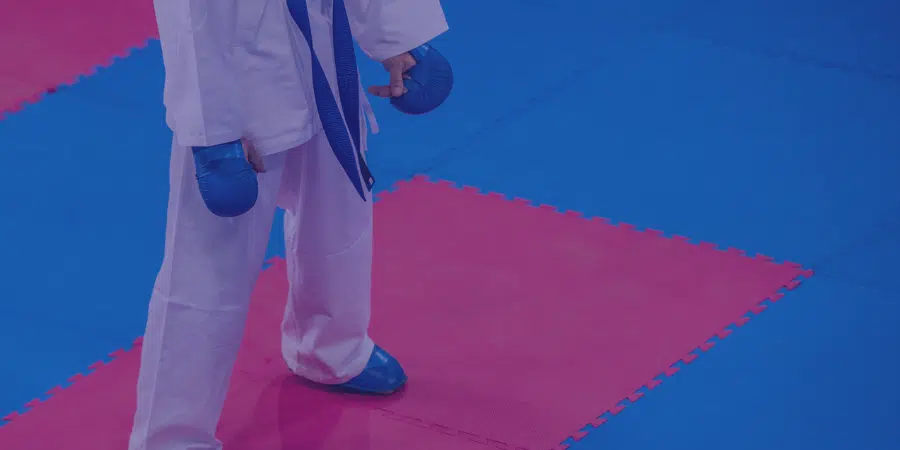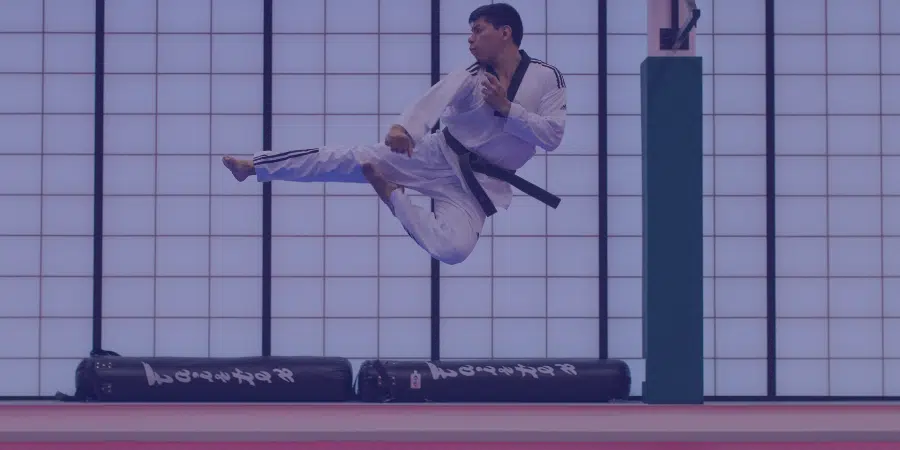While martial arts are considered relatively safe, any form of physical activity comes with risks. Luckily, there are ways to protect your students from accidents that could lead to injuries. Martial arts mats are one of the best ways to ensure a safe environment for your classes. Here is our guide to finding the best martial arts floor mats for your studio.
The Basics Of Martial Arts Mats
From karate to judo, the study of martial arts is beneficial at any age. Classes offer adults and children the chance to improve motor skills, learn basic self-defense, and boost self-confidence.
Mastering any variation of martial arts requires hard work, dedication, and a lot of practice, though. It rarely comes easy, which means your students will fall down a time or two. With the right martial arts flooring systems, you can make sure they’ll get back up to try again.
Martial arts mats provide the necessary shock absorption to protect the body after a fall. With the right cushioning, you can avoid putting unnecessary stress on muscles and joints, while also shielding your students from broken bones or serious head injuries.
Now that you know how important martial arts mats are, it’s time to choose the right ones for your studio. To make your choice easier, we’ll look at the types offered and the features to look for.
Types Of Martial Arts Mats
There are many different types of martial arts mats, with options for every budget and type of class offered. Some of the more common martial arts floor mats you’ll be able to choose from include:
- Interlocking foam tiles
- Folding mats
- Roll out mats
- Landing mats

Interlocking foam tiles
Interlocking foam tiles are affordable and convenient. All you have to do is piece them together like a puzzle. That means you can add or take away pieces to customize the size of your mat at any time. They’re generally the thinnest of all mats.
Tiles are the best option if space is an issue. You’ll have the ability to stack them up high after a class, rather than taking up storage or space. They’re even portable, which makes them perfect for transporting if you ever teach on-the-go or outside. These make a great option for those in shared recreation areas and studios with multiple types of activities.
Folding mats
Folding martial arts mats are durable and easy to set up. While they may take up more space than tiles, they can still be tucked into the corner of a room when you need to get them out of the way.
You can also use mat tape to connect multiple folding martial arts mats if you need to increase coverage in your space. They come in a variety of thickness options to serve the needs of students at every level of study.
Roll out mats
Much like folding mats, you can connect more than one rolling mat using mat tape. That means you can easily increase the size of your space when needed. When your mats aren’t in use, all you have to do is roll them up and store them away.
If you’re concerned about portability, this is another good option. You’ll just need to make sure your vehicle is long enough to hold them.
Landing mats
Of all martial arts flooring systems, landing mats are generally the thickest option with the most shock absorption. Air is released as soon as you hit the mat, which means your students will avoid more bumps and bruises.
Unlike the other options available, though, landing mats tend to be bulky and heavy. That means they’re best for spaces that always have the mats out or stored in very close proximity so it’s easy to drag them over to your space.
Features To Look For
There are a variety of factors that may determine which martial arts mats are right for you. However, some elements are particularly important, no matter the type of mat.
Thickness and padding
As an instructor, you know that safety is always your number one priority. The mats you choose should be cushioned enough to absorb the impact of hard landings. The best martial arts floor mats will be made of EVA foam, a material that is soft yet sturdy.
When it comes to thickness, beginner and intermediate classes only need approximately one inch of padding. If you teach more advanced moves, you should consider thickness levels ranging from two to eight inches. If possible, talk to others who teach comparable classes to find padding that works best for your style of instruction.
Easy cleaning
Sanitation is an essential part of martial arts studio maintenance, for kids and adults alike.
It’s important to choose a mat that is water-resistant and easy to clean. It should be covered in a non-porous material (such as vinyl) that can be wiped down with a damp cloth, mop, or anti-bacterial cleaning wipes.
Durability
Martial arts mats are an investment, which means they should last for years to come.
Consider mats covered in durable vinyl. These will better withstand sweat and general wear-and-tear from repetitive impact. Plus, they have non-slip qualities that will help keep your mats in place.

Which Martial Arts Mats Do I Need?
The right martial arts flooring systems for your studio will depend on a variety of factors. Before you begin your search, answer a few important questions to narrow down your options:
- What types of martial arts do you teach?
- Are your students beginners, intermediate, or advanced?
- How old are your students?
- Will you need to put your mats away after each session?
- How much storage space do you have?
- What is your budget?
- How large is the space you’re trying to cover?
By answering these questions, you will be able to find the right martial arts mats for your studio. For example, those with limited space and beginning students may look to interlocking tiles, while those with a dedicated studio and advanced students will likely need thick landing mats.
Run Your Martial Arts Studio Safely
Once your studio space is up and running, it’s time to get to work. Studio Director can help you manage the day-to-day tasks of running your martial arts studio. From enrollment to marketing, our software acts as a silent business partner to keep you focused and on track.
Don’t take our word for it, start using Studio Director today. With our free trial, you’ll be able to try out the unique features we offer studio owners.


